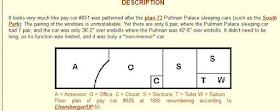Above From the Laurel State Register February 11, 1930
James Henry Conoway did not live long after his
retirement in 1930, he passed away in 1931 at age 66. His wife and him lived on Grove Street. He was born in Georgetown in 1865, the son of
John Wingate and Mary E Workman Conoway. He started work with the Railroad in Georgetown
about the same time he married his wife Mary Jefferson Chase (1870-1949). She was the daughter of Edward and Sarah
Wilkins Chase. He moved to Delmar about 1915.
The Conoways had as children; Margaret May (1888 - ) who married Harvey
Hastings, Helen (1892-1989) who married Harry Wilmer Steele, and John H Conoway
(1898-1993) who married Myrtle M. Kerr. Both John Henry and Mary Jefferson are buried
at the Union Cemetery Georgetown, Delaware.





















